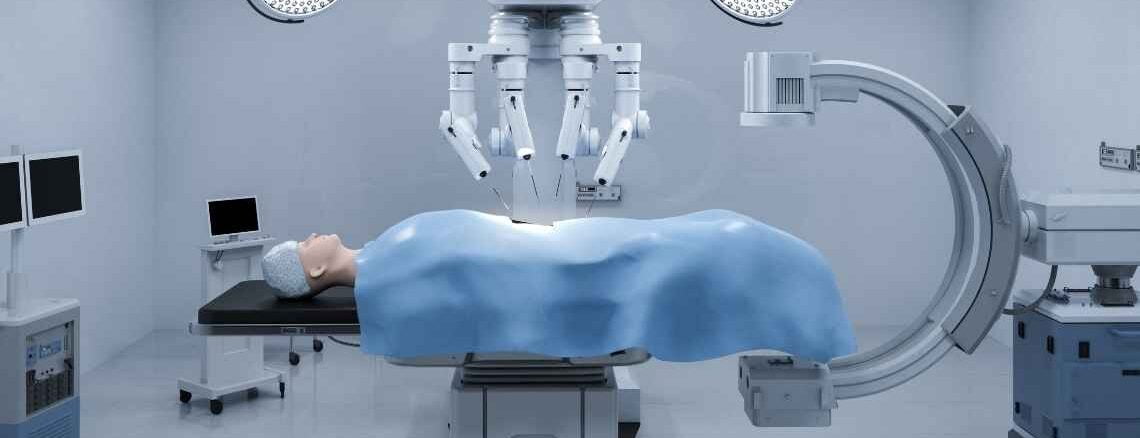
In Which Diseases Is Robotic Surgery Used?
Robotic surgery, also known as robot-assisted surgery, is a type of minimally invasive surgery performed by a computer-controlled machine. Due to its potential advantages over traditional surgery, such as smaller incisions, less pain, and faster recovery times, robotic surgery has recently gained popularity.
Various diseases and conditions that can be treated with robotic surgery are detailed below:
- Prostate cancer: Prostate cancer, the most common cancer in men, is often treated with robotic surgery. During robotic prostatectomy, a robotic system is used by the surgeon to remove the prostate gland and surrounding tissue. Compared to open surgery, the advantages of robotic prostatectomy include shorter hospital stays, less blood loss, and faster recovery.
- Gynecological conditions: Numerous gynecological conditions, including uterine fibroids, endometriosis, and uterine cancer, are frequently treated with robotic surgery. For example, during robotic hysterectomy, the surgeon uses a robotic system to remove the uterus. Smaller incisions, less discomfort, and faster recovery are advantages of robotic hysterectomy over open surgery.
- Colorectal conditions: Inflammatory bowel disease, colon cancer, and rectal cancer are just a few of the colorectal conditions that can be treated with robotic surgery. For example, during a robotic colectomy, the surgeon uses a robotic system to remove part of the colon. Compared to open surgery, the advantages of robotic colectomy include shorter hospital stays, less blood loss, and faster recovery.
- Urological conditions: Many urological conditions, including kidney, bladder, and prostate cancer, are also treated with robotic surgery. For example, during robotic nephrectomy, the surgeon uses a robotic system to remove the kidney. Compared to open surgery, the advantages of robotic nephrectomy include shorter hospital stays, less blood loss, and faster recovery.
- Cardiothoracic conditions: Numerous cardiothoracic conditions, including coronary artery disease, aortic aneurysms, and mitral valve prolapse, are also treated with robotic surgery. For example, during a robotic coronary artery bypass procedure, a robotic system is used by the surgeon to bypass blocked coronary arteries. Compared to open surgery, robotic coronary artery bypass surgery offers advantages such as shorter hospital stays, less blood loss, and faster recovery.
- Gastrointestinal conditions: Various gastrointestinal conditions, such as stomach cancer, esophageal cancer, and hiatal hernia, are also treated with robotic surgery. For example, during a robotic gastrectomy, the surgeon uses a robotic system to remove part of the stomach. Compared to open surgery, the advantages of robotic gastrectomy include shorter hospital stays, less blood loss, and faster recovery.
- Head and neck diseases: Many head and neck conditions, including thyroid cancer, parathyroid cancer, and laryngeal cancer, are also treated with robotic surgery. For example, during robotic thyroidectomy, the surgeon uses a robotic system to remove the thyroid gland. Smaller incisions, less discomfort, and faster recovery are advantages of robotic thyroidectomy over open surgery.
Robotic Surgery for the Treatment of Various Diseases and Conditions
Various diseases and conditions are treated with a minimally invasive surgical technique called robotic surgery. Prostate cancer, gynecological, colorectal, urological, cardiothoracic, gastrointestinal, and head and neck disorders are some of the most common conditions treated with robotic surgery.
In general, robotic surgery offers advantages over traditional surgery, including smaller incisions, less pain, and faster recovery times. The use of robotic surgery should be decided on a case-by-case basis after careful evaluation of the patients unique medical needs and conditions; it is important to note that not all patients are candidates for this procedure.
It is also important to keep in mind that robotic surgery is a relatively new technology, and more research is needed to fully understand both its potential long-term advantages and disadvantages. However, evidence to date shows that robotic surgery is a safe and reliable choice for the treatment of a range of diseases and conditions.
If you are considering undergoing robotic surgery to treat a specific condition, it is very important to review all your options with your medical team. They can help you understand the potential advantages and disadvantages of robotic surgery and assist you in making a decision about your treatment.
Reference: Çal, Ç. (2012). Prostate cancer in the era of robotic surgery. Urooncology Bulletin, 11(2), 150-5.
Sources:
https://utswmed.org/conditions-treatments/robotic-surgery/
https://www.mayoclinic.org/tests-procedures/robotic-surgery/about/pac-20394974

Social Media